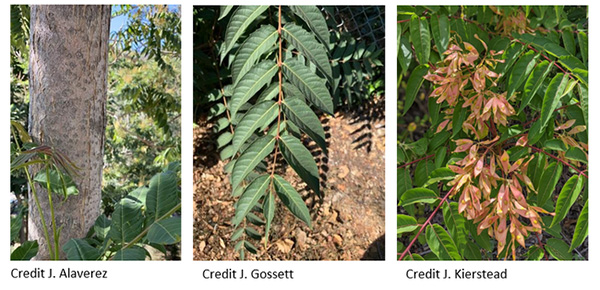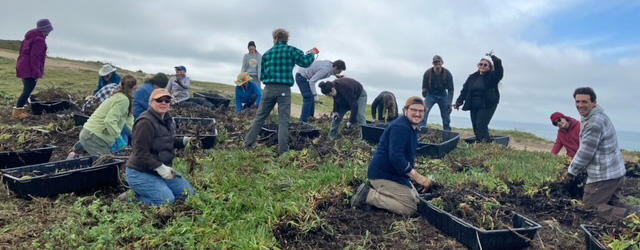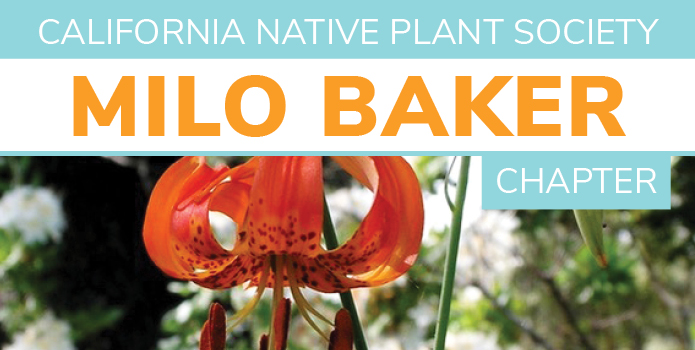 |
April NewsletterWhat's in this issue: Speaker Series, Eco-friendly Garden Tour, Plant of the Month, Remembrance, April Plant Walks, Help Invasive Species Scouts, Ongoing Volunteer Opportunities |
Speaker Series
|
Eco-Friendly Garden Tour – Celebrate Spring– Betty Young, Milo Baker Nursery Co-chair The 2024 Eco-Friendly Garden Tour will take place on Saturday, May 18th, 2024 from 10 am – 4 pm. The tour will feature 26 eco-friendly gardens throughout Sonoma and Marin counties.
The tour is FREE and self-guided. but you must register. I just did and it's very easy. A week before the tour, you will receive an e-mail with the garden addresses. Only those who register will get the addresses. Make sure to register and put a reminder on your calendar. Here's a link for however you like to connect: Registration
The tour provides a great opportunity to be outside, see beautiful gardens, get inspiration, and visit with other gardening neighbors. We will have Milo Baker chapter native plant gardeners at the three gardens we are sponsoring to answer questions and provide info. The Sonoma County Water Department as always is sponsoring the tour and will have activities and a compost give-away at Santa Rosa City Hall. We will have a plant sale from 10 am to noon at our Laguna/CNPS Nursery at the Laguna Environmental Center, 900 Sanford Rd, Santa Rosa. There will be lots of new species for the first time ever at the sale. Start your day at the plant sale, we sell out quickly. |
A Brief Service Opportunity– Karen Thompson, Milo Baker Treasurer If you’ve been wanting to pitch in and do your bit for the Milo Baker Chapter, but haven’t wanted to take on a board position or commit to an ongoing job, this is the one-and-done project for you. Task: Data entry in Excel. No skill is involved beyond basic keyboarding. Time estimate: Four to six hours. Can be done in one or several sessions, either on your computer at home (if you have the Excel program) or on my computer at my home. Please email Milo Baker treasurer Karen Thompson, ket@sonic.net, for details. |
Fritillaria affinis – Mission Bells– Liz Parsons, Milo Baker Vice President
Illustration by Liz Parsons. One of my favorites is the native fritillary, checker lily, or mission bell – Fritillaria affinis. It grows from true bulbs and is now in full bloom. The flowers are mottled green and brown and appear to be checkered, hence the common name. This fritillary is rather common in shady, moist woodsy areas and is easy to spot. Early in the season, look for a rather tall, erect stem with a whorl of 3 to 5 bright green, lanceolate leaves. When the nodding, bell-shaped flowers appear, they bloom one at a time up a raceme with 3 to 6 or more flowers. The petals are about 1 inch in length, the plant size ranges from 12 to 32 inches. When the plant has finished blooming, look for the unusual seed pods which are round capsules with 6 angled wings. The name fritillary refers to the shape of these seed pods and means “dicebox” in Latin. I have never tried to grow this fritillary, but I think it would take patience because the bulbs must be kept dry in summer and it takes four to five years for seeds to reach blooming size. Several people have told me that they were able to purchase small plants from Cal Flora in Fulton. Checker lily is native to the Coast Ranges from Ventura County to the Siskiyou Mountains. The book Wild Lilies, Irises and Grasses, by Nora Harlow and Kristin Jacob, with lovely illustrations by Kristin, UC Press, 2003 is a treasure and worth the effort to find. |
Remembrance– Liz Parsons, Milo Baker Vice President In recent months two long-time chapter members passed away. Alan Brubaker passed away in February after a short illness. Alan hosted several chapter picnics at his Kenwood home on Adobe Canyon Road. He maintained a beautiful garden with a world-class conifer collection and lots of native plants. Every year when we potted up native iris for the plant sale, he and I would dig up divisions from his many clumps. He had a wide range of colors. At Christmas time, his garden was the source of all the greens that we turned into beautiful wreaths at the December meeting. Unfortunately, many of his plants were destroyed in the 2017 Tubbs fire. He overcame this great loss and continued to live in his Sonoma Creek-side home that was spared from the fire. He and his dog Layla, were inseparable. Alan was a good friend to the chapter and he will be missed. Alan generously named the Milo Baker Chapter as a partial beneficiary of his trust. Bob Hass passed away in Albuquerque, New Mexico on March 4, 2024. Bob worked as a freelance editor and was the editor of the CNPS publication Fremontia and of the newsletter, now Flora. He also worked at the Sonoma Ecology Center where he provided staff support for the Vegetation Management Program, including the invasive Arundo donax. Bob played cello in chamber ensembles. He was an avid gardener and environmentalist. Even though he left Sonoma County many years ago, we remember him fondly. A full obituary was published in the March 10th Press Democrat. An article in the March 10th Press Democrat reminded us of another loss to the Chapter. The article was about the yet-unsolved, murder of Marion Weiger in 1983. Members of the Milo Baker Chapter, who knew her well, were shocked and held a memorial at the Luther Burbank Home and Gardens. Her house on Charles Street faced the garden and she often walked there. Memorial donations funded the purchase of a bench and plaque. The bench was placed on the south side of the garden, facing the home where she lived. Next time you visit the garden make sure to go and sit on the bench and enjoy Luther Burbank’s garden, just as she did. |
April Plant Walks– Lynn Houser, Milo Baker Field Trip Coordinator Saturday, April 6, 10:00 am – 1:00 pm | Attendance limit: 10 (for CNPS members only) Auberge Ceanothus – Special access plant walkabout to note plants and look for Sonoma Ceanothus. Meet at the Safeway center parking lot at Calistoga Road and Highway 12 in Santa Rosa at 10:00 am to carpool or caravan. This 65-acre preserve is owned and managed by the Sonoma County Agricultural and Open Space District. Donated in 2011 as part of a development plan for a resort in the Mayacamas Mountains, east of Highway 12 in Kenwood, it is adjacent to Hood Mountain Regional Park. The preserve is mostly chaparral and is recovering from both the Nuns Fire and the Glass Fire. We will take a short walkabout to look for Ceanothus sonomensis and make notes of the rare shrubs, wildflowers, and other plants we observe, while we enjoy a beautiful view. Bring a field guide and hand lens if you have them. Hat and sturdy pants and boots are recommended; rattlesnakes and poison oak may be present. Also, bring water and a lunch or snack. This hike is not on Eventbrite; it is only advertised in the newsletter, so please email Lynn at Lynnaeus@gmail.com to sign up or ask questions. Limited to 10 members. Sunday, April 7, 9:30 pm – 12:30 pm | Attendance limit: 20 Fairfield Osborn Preserve – Leader: Kerry Wininger, Sudden Oak Death Program Coordinator for UCCE Sonoma County
Photo credit: Gary Hundt Join us for a journey across this varied and abundant landscape while learning about Sudden Oak Death (SOD) biology and hosts, history, ecology, current state of the field, and what you can do to help protect our native oaks while also keeping an eye out for the abundance of striking wildflowers that appear at Osborn Preserve each spring. Plan to hike moderate to strenuous steep trails, 1 mile with a 200-foot elevation gain, and up to 3.5 miles with a 500-foot elevation gain. Prepare for an adventure through shady oak woodlands and sunny grasslands with ticks and insects, poison oak, and uneven terrain. Sonoma County has more SOD than any other area in California, with new outbreaks still appearing. Osborn Preserve is home to majestic oak woodlands along with 8 other plant communities, including dozens of native species that are susceptible to this devastating forest disease. Osborn Preserve is the location where SOD was first confirmed in the county in 2019, hosted the first fully bilingual (English and Spanish) SOD blitz citizen science event in the state last spring, and continues to be a hot-bed of SOD research and educational activities. Please wear sturdy shoes, bring a snack, water, hat/sun protection, and dress in layers. You will be asked to sign a liability waiver upon your arrival. No dogs or smoking is permitted. Phone reception is poor on the mountain. Register on Eventbrite. Sign up for email notices for future hikes at milobakerevents@gmail.com Sunday, April 14, 10:00 am – 2:00 pm | Attendance limit: 16, kids 8 and older welcome. Ranchero Mark West Preserve, LandPaths – Plant Walk led by Tek Tekh Gabaldon, Steward of Ranchero Mark West, 7125 St. Helena Road Santa Rosa. Meet at 9:30 am at the Safeway center at Calistoga Road and Highway 12 if you want to carpool or caravan to this 124-acre preserve which serves as an outdoor classroom with LandPaths. Naturalist Tek Tekh Gabaldon, who is Mishewal Wappo, is a traditional culture bearer active in tribal ceremonial activities in the North Bay. She will lead us on a 3 or so-mile hike along Mark West Creek, through redwood forest, woodlands, and chaparral to see wildflowers and learn about the stewardship and fire recovery of the preserve from the 2020 Glass Fire as well as traditional uses of native plants. Trails are well-developed; wear boots or sturdy shoes and bring water and a sack lunch. A hat and sunscreen may be in order. Register on Eventbrite. Sunday, April 28, 11:00 am – 3:00 pm | Attendance limit: 16 Saddle Mountain Preserve, Cleland Road, Santa Rosa, Sonoma County Agricultural and Open Space District Leader: Lynn Houser, botanist (with Peter Warner’s plant list) Meet at the Rincon Valley Library 6959 Montecito Blvd. Santa Rosa at 11:00 am to carpool or caravan up to Cleland Road. Join us on this collaborative hike along a dirt road behind Saddle Mountain to explore part of this 960-acre preserve for which the Milo Baker chapter wrote letters to help preserve about 20 years ago. We will have a 3-4 mile walk with some elevation gain, (with options to shorten it) past Weeks Creek and Alpine Creek. We will see beautiful displays of wildflowers and hopefully some super cute little milkvetches (Astragalus clarianus) for which our chapter wrote the letter when the property was being proposed for development. More fire recovery through redwoods, woodlands, and chaparral from the 2020 Glass Fire. Wear sturdy shoes, sunscreen, and a hat for sun protection. Bring water and a sack lunch. We will provide plant lists. Register on Eventbrite. |
Help Invasive Species Scouts locate the ‘Tree-of-Heaven’ (Ailanthus altissima)– Mary Ellen King, Milo Baker Chapter member and UC Master Gardener The Tree-of-Heaven (Ailanthus altissima) is an invasive tree that has been documented in 45 states including California. It is a rapidly growing deciduous tree native to both northeast and central China, as well as Taiwan. It grows almost anywhere including the side of roadways, railways, fencerows, and forest openings. Tree of Heaven is often a host for the invasive Spotted Lantern Fly, which is spreading towards California. The California Department of Food and Agriculture reached out to the State UC Master Gardener Program, which manages the Invasive Species Scout Project, to collaborate on a project to identify the location of stands of Tree-of-Heaven throughout California. You can help participating UC Master Gardener invasive species scouts by identifying and reporting Tree-of-Heaven locations in our area. If you know of a large tree or stand of trees please contact Mary Ellen King at deleokingdom@comcast.net. She will use the UC Master Gardeners tool to record the trees. Over the coming months, as the Tree-of-Heaven leaves emerge and the tree blooms, it will be easier to identify. The tree has several distinct features to help identify it. See the following UC Agriculture and Natural Resources links for an overview. |
Ongoing Volunteer Opportunities
Volunteers at Bodega Head; photo credit: Jan Lochner Living Learning Landscapes Workday – second Friday of the month (9:30 am - noon). Meet at 1808 Albany Drive in Santa Rosa. Please RSVP to April Owens aprilleeowens@gmail.com so we know to expect you! Weekly Doran Beach Ice Plant Removal – every Wednesday (9:30 am - 11:30 am). Bring clippers and gloves and knee pads if you like. One of the most pleasant workdays happens every week – a trip to Doran Beach to pull ice plant. We are clearing out the ice plant that is in the marshland to make room for natives. It is very visual and quite satisfying, with the sound of the waves, birds, and foghorn. To join us, please text Jan Lochner at (707) 569-4724, to let her know you are coming. Bodega Head Ice Plant Removal Project – second Sunday of each month (10:00 am - 1:00 pm). CNPS is leading volunteers at Bodega Head to save native species from getting smothered by ice plant. Meet at the main parking lot near the bathrooms. Bring water, clippers, and gloves if you have them. Email Alynn at alynnkjeldsen@gmail.com for more information and to let us know that you are coming. For more information, please visit the Volunteer Opportunities page on our website. |
| Visit the CNPS Milo Baker website |
|
|
||||
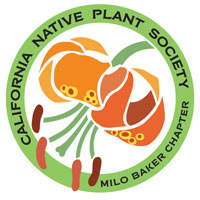 |
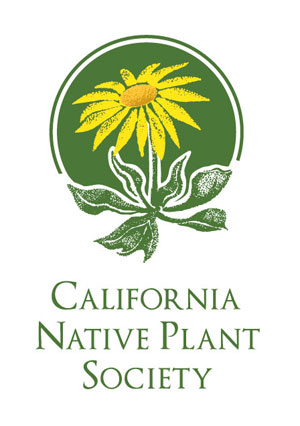 |
|
CNPS Statewide Website | Milo Baker CNPS Website |
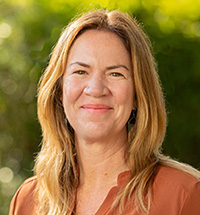 Bios: Jen Kuszmar has been working in natural resources in several capacities over the last 20 years. She has served her community working with the AmeriCorps Watershed Stewards Program, LandPaths, Sonoma Resource Conservation District, and the North Coast Resource Partnership at the County of Humboldt before joining Sonoma County Ag + Open Space in 2015. Her career has provided her the opportunity to roam the forests, rivers, meadows, and mountains throughout Northern California. Jen currently leads the Acquisition program which invests in the permanent protection of the highest priority lands in Sonoma County via conservation easements and fee transactions. In her free time, Jen enjoys traveling, discovering new restaurants, gardening, watching live music, and taking long walks with her husband and dog.
Bios: Jen Kuszmar has been working in natural resources in several capacities over the last 20 years. She has served her community working with the AmeriCorps Watershed Stewards Program, LandPaths, Sonoma Resource Conservation District, and the North Coast Resource Partnership at the County of Humboldt before joining Sonoma County Ag + Open Space in 2015. Her career has provided her the opportunity to roam the forests, rivers, meadows, and mountains throughout Northern California. Jen currently leads the Acquisition program which invests in the permanent protection of the highest priority lands in Sonoma County via conservation easements and fee transactions. In her free time, Jen enjoys traveling, discovering new restaurants, gardening, watching live music, and taking long walks with her husband and dog.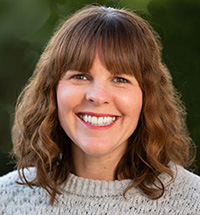 Amy Ricard has over 15 years of experience working in non-profits and government agencies in the fields of communications, marketing, community engagement, and policy. She was the Media Relations Manager at Oakland-based Save The Bay before returning to her hometown of Santa Rosa in 2012. She worked briefly as a Communications Coordinator at the Redwood Empire Food Bank before joining Sonoma County Ag + Open Space in 2014. She currently leads the Community Resources program, which provides information, technical assistance, and funding to the community through outreach and communications, grants, and other supportive programs. She is passionate about the environment, community service, and social equity. When she’s not at work, you can find her exploring the outdoors, watching soccer, doing puzzles, traveling with her family, or enjoying a good meal with friends.
Amy Ricard has over 15 years of experience working in non-profits and government agencies in the fields of communications, marketing, community engagement, and policy. She was the Media Relations Manager at Oakland-based Save The Bay before returning to her hometown of Santa Rosa in 2012. She worked briefly as a Communications Coordinator at the Redwood Empire Food Bank before joining Sonoma County Ag + Open Space in 2014. She currently leads the Community Resources program, which provides information, technical assistance, and funding to the community through outreach and communications, grants, and other supportive programs. She is passionate about the environment, community service, and social equity. When she’s not at work, you can find her exploring the outdoors, watching soccer, doing puzzles, traveling with her family, or enjoying a good meal with friends.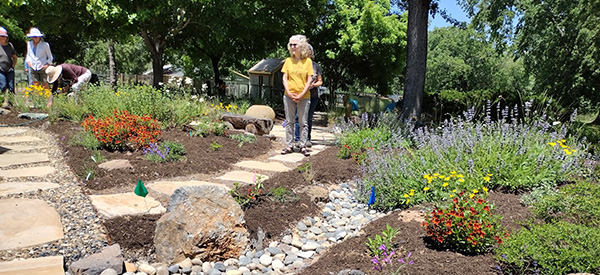
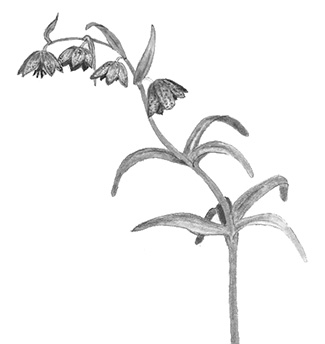 After a recent walk in Jack London State Park, I’m happy to report that all of the early spring flowers have appeared. Hound’s tongue (Cynoglossum grande) – I realize that there has been a name change, but I prefer the old name, Trillium (Trillium ovatum), milkmaids (Cardamine californica) and shooting stars (Primula hendersonii) are blooming everywhere. The fairy bells (Disporum – now Prosartes–hookeri) are beginning to stir. These are all perennial plants that grow from fleshy rootstocks, not from bulbs. Many beautiful bulb species are coming to life in the wild and in our gardens.
After a recent walk in Jack London State Park, I’m happy to report that all of the early spring flowers have appeared. Hound’s tongue (Cynoglossum grande) – I realize that there has been a name change, but I prefer the old name, Trillium (Trillium ovatum), milkmaids (Cardamine californica) and shooting stars (Primula hendersonii) are blooming everywhere. The fairy bells (Disporum – now Prosartes–hookeri) are beginning to stir. These are all perennial plants that grow from fleshy rootstocks, not from bulbs. Many beautiful bulb species are coming to life in the wild and in our gardens.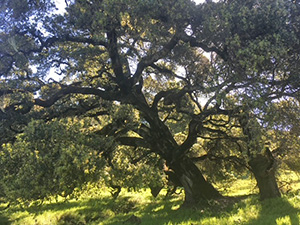 Meet at 6543 Lichau Road, Penngrove. Please be on time, as the gate will be locked at 1:45 pm.
Meet at 6543 Lichau Road, Penngrove. Please be on time, as the gate will be locked at 1:45 pm.